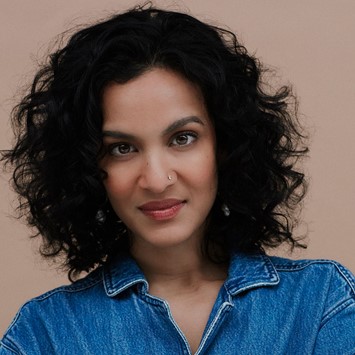To read a list of Anoushka Shankar’s accomplishments is to read many life stories in one: masterful sitarist, film composer, impassioned activist, the first Indian musician to perform live or to serve as presenter at the Grammy Awards and the first Indian woman to be so nominated. Immersed from a young age on the world stage, she is a genre-defying artist across realms of classical and contemporary, acoustic and electronic.
Her home was seldom silent. Musicians were a permanent presence - learning, rehearsing, improvising or simply playing musical games around the dinner table. She began studying the sitar and Indian classical music from age 9 under the tutelage of her father, Pandit Ravi Shankar, a master of the instrument, and a figure without whom 20th century music would quite simply not have been what it was.
After making her professional debut at 13, she began touring worldwide alongside her father, then embarked on a successful touring career when she was 18, becoming known for her virtuosic yet emotional playing style, unusual instrumentation and precise rhythmic interplay. Having discovered electronic music as a teenager before later immersing herself in the Goan psychedelic trance scene, she found parallels with the meditative qualities of Indian classical music in the ecstatic release of the dance floor.
By age 25, she had released three classical albums for Angel Records/EMI and performed at venues such as Carnegie Hall and the Barbican. Her switch to earthy ambience and deep textures on “Rise” (2005) was fueled by a desire “to create music that more fully represents who I am.” Self-composed and produced, and infused with electronics, “Rise” “was a way to speak the language of my own history: growing up across three continents with one foot in the past and one in the present.”
Earning her a second Grammy nomination, the album formed the blueprint for her solo career. Her follow-up album, “Breathing Underwater,” created with multi-instrumentalist Karsh Kale, envisioned a sonic world where ragas, bright analog soundscapes, contemplative electronics and guest turns by Ravi Shankar, Sting and her half-sister Norah Jones could all exist without seeming an inch out of place.
Signing to Deutsche Grammophon in 2011 marked the start of a decade of unbridled fertility. Over four distinct albums, each Grammy-nominated, disparate threads were woven into a tapestry, even as themes shifted and sound palettes expanded. Deep meditations of love and loss on “Traces of You” nestled against a quietly triumphant return to pure raga improvisations on “Home”; the historical relationship between Indian classical music and Spanish flamenco was explored on the Javier Limón-produced “Traveller,” while the current global refugee crisis informed the rallying cry of “Land of Gold.” Co-written with frequent collaborator Manu Delago and featuring MIA, Vanessa Redgrave and Alev Lenz, the disc crystallized her sound: a de-exotified, high-definition sitar resonating across unpredictable, genre-resistant instrumentation.
Shankar has collaborated with diverse artists including Herbie Hancock, Patti Smith, Joshua Bell, Gold Panda, Rodrigo y Gabriela, Jules Buckley and His Holiness the Dalai Lama. Her touring career has taken her from legendary jazz cafes to festival stages before 40,000 people. That versatility comes out of years spent building the confidence to be artistically truthful and to connect to her audience from the heart.
As her music speaks to timeless pasts and urgent futures, so she is just as tireless in her activism. She has been outspoken about her experiences as a woman and a survivor of child abuse, throwing her weight behind campaigns such as One Billion Rising. She works with organizations such as the UNHCR and Help Refugees to raise funds and awareness for refugees. In 2020, she was announced as the inaugural president of the F-List, a British database created to help bridge the gender gap in music, and as an Ambassador for the Walk, an international artistic project that supports refugees.
Please note: Biographies are based on information provided to the CSO by the artists or their representatives. More current information may be available on websites of the artists or their management.


